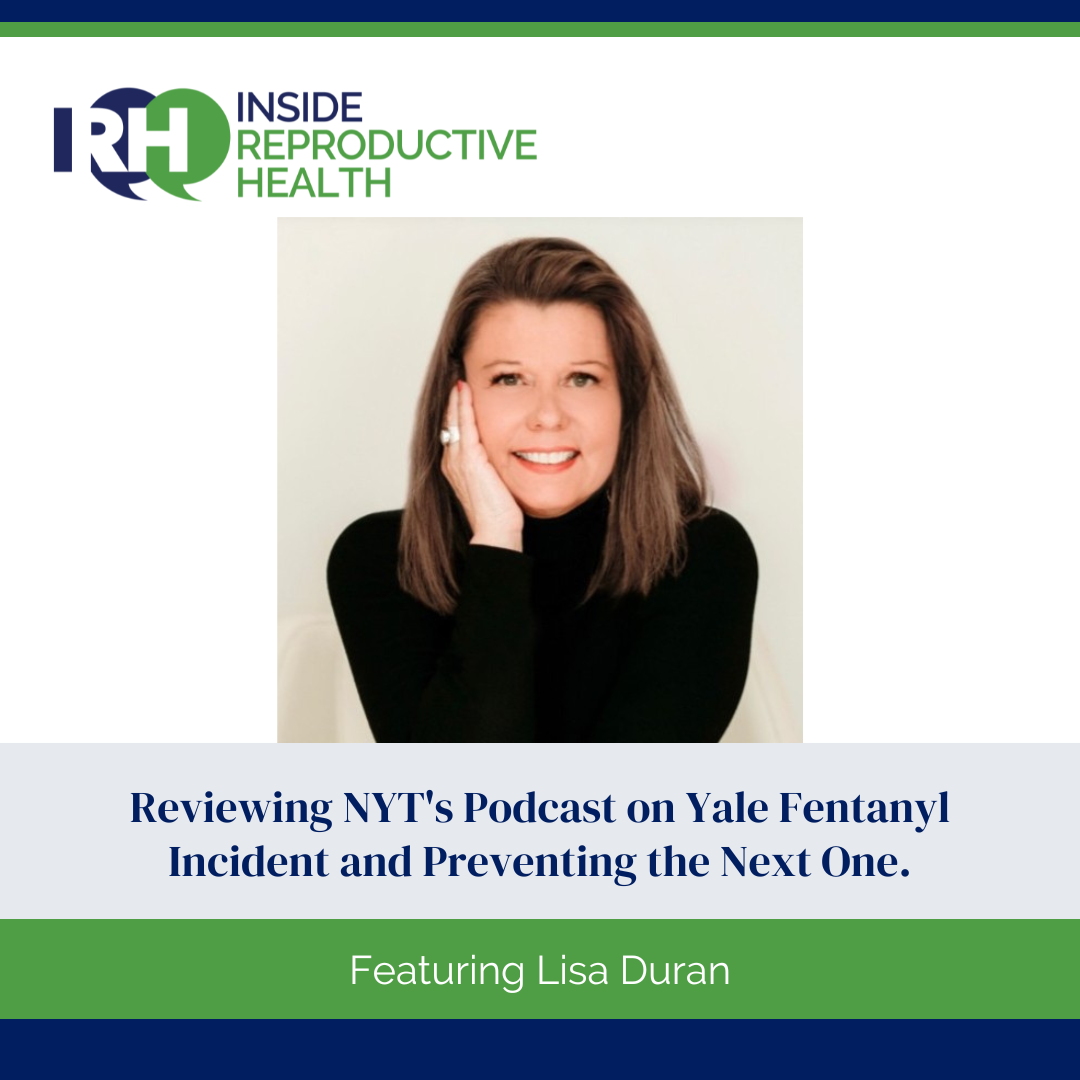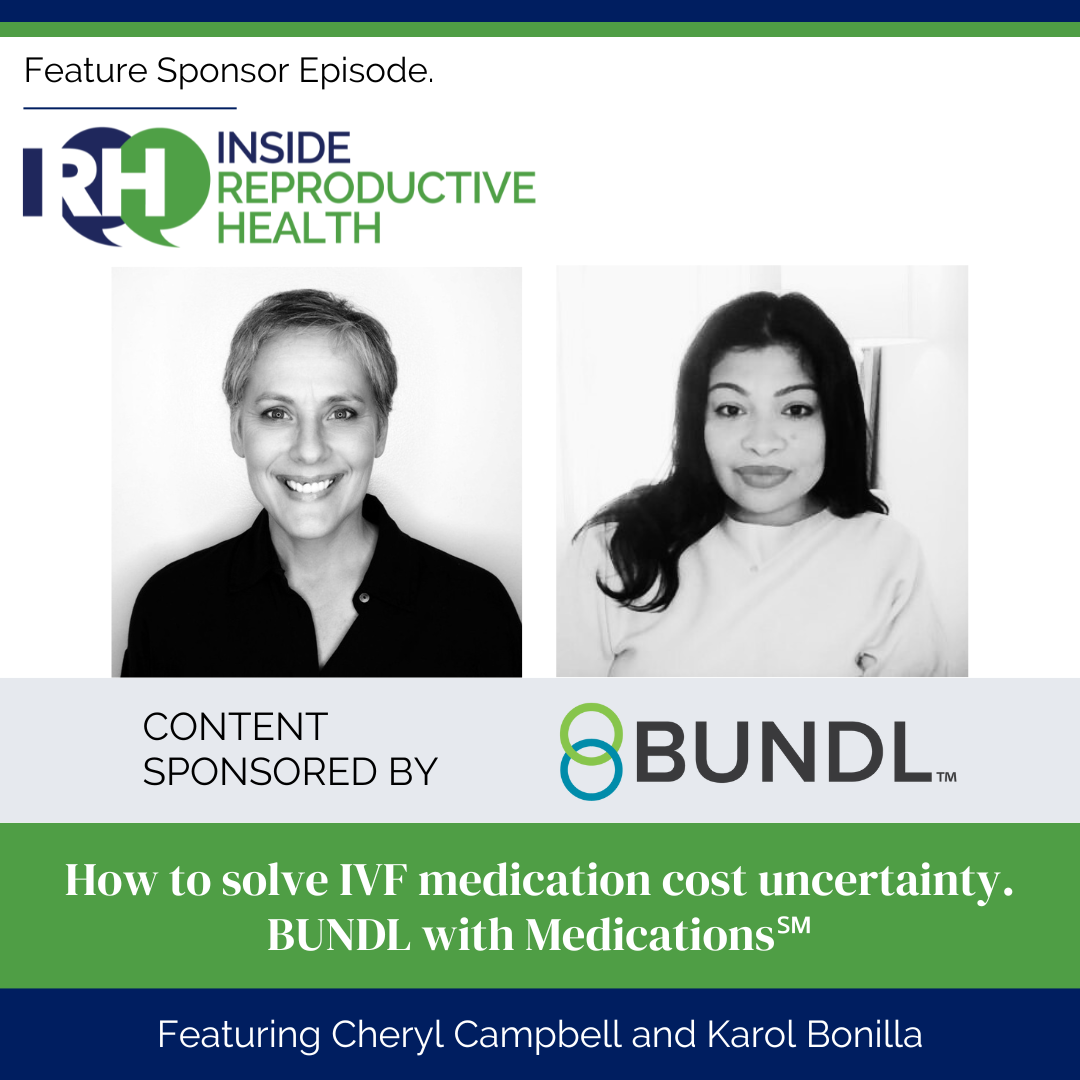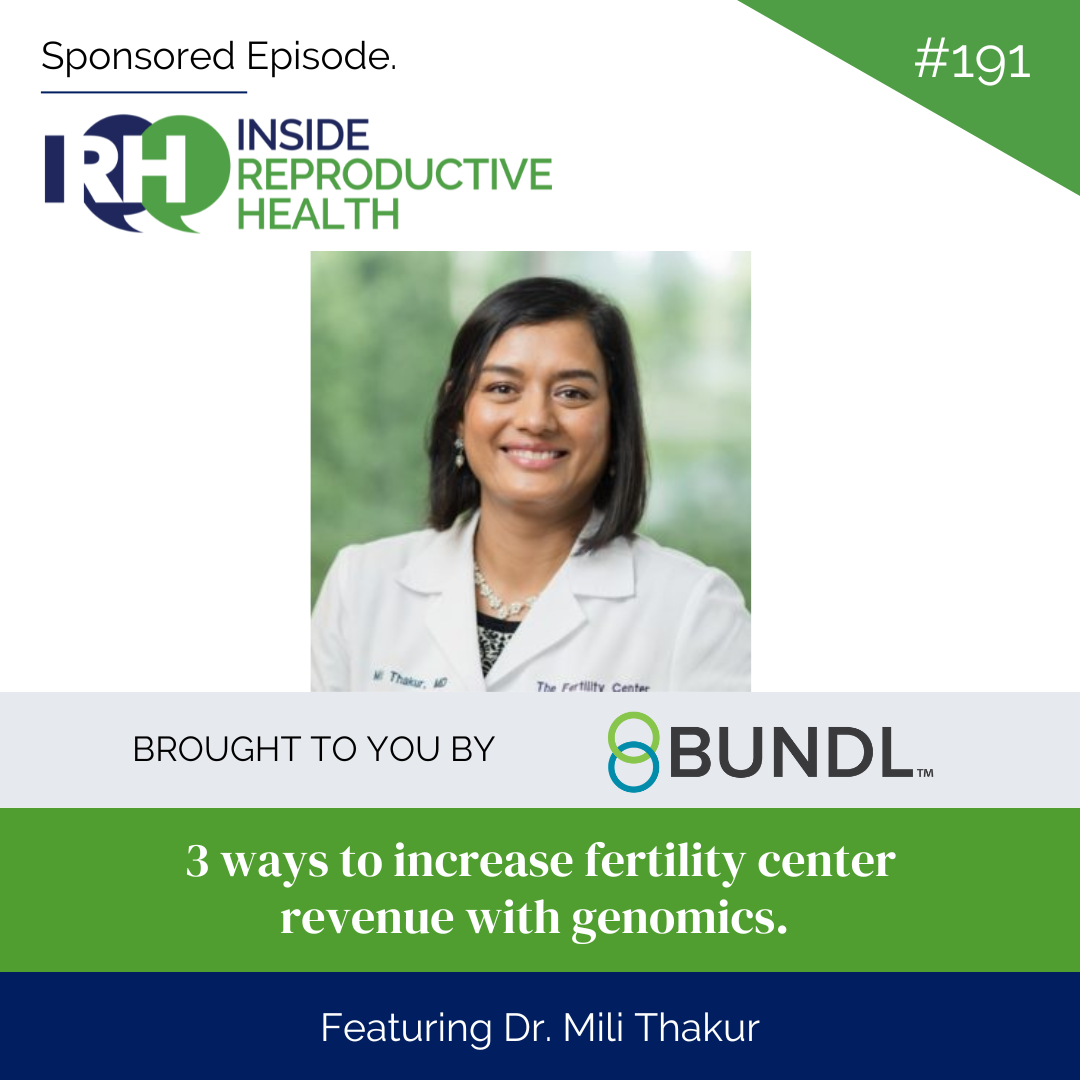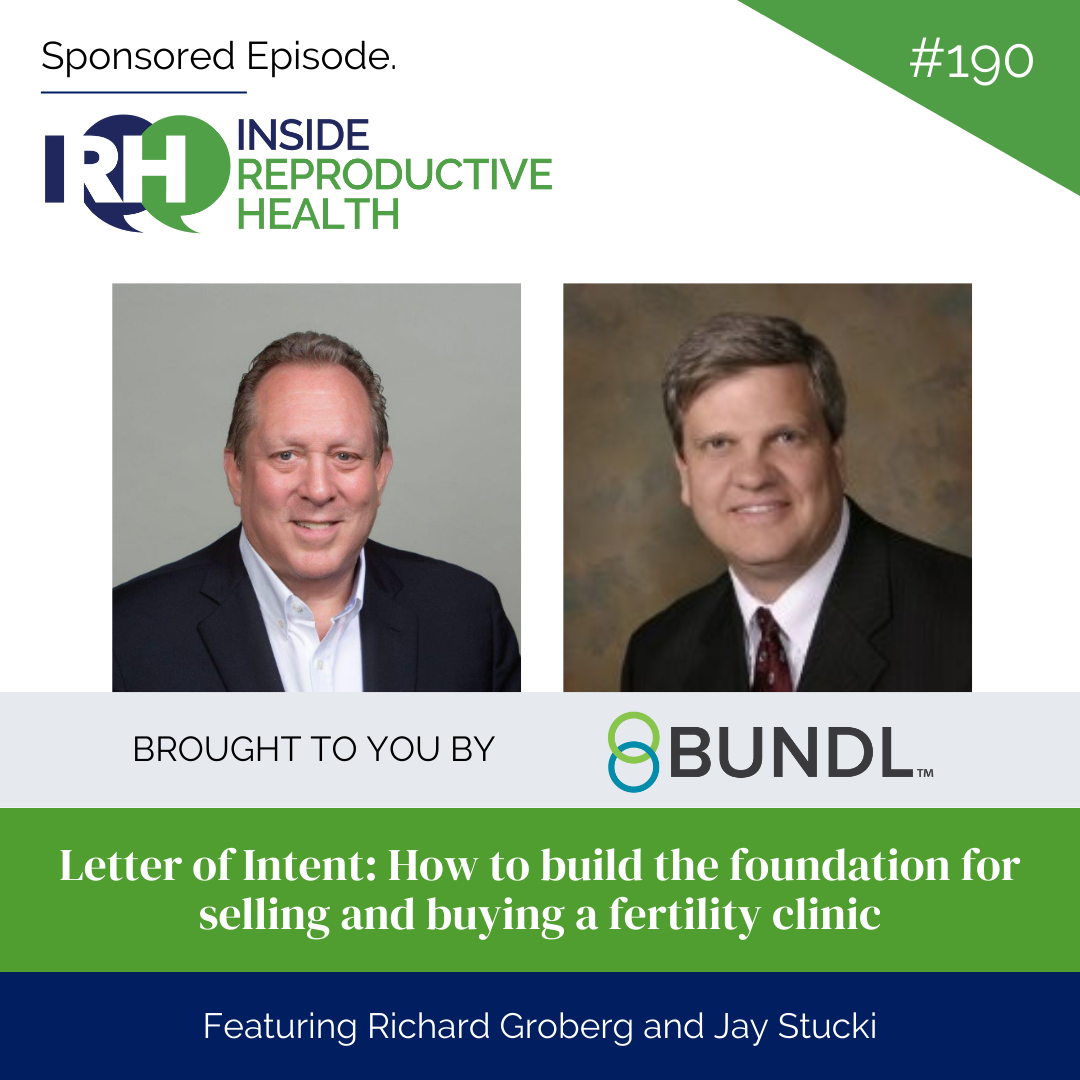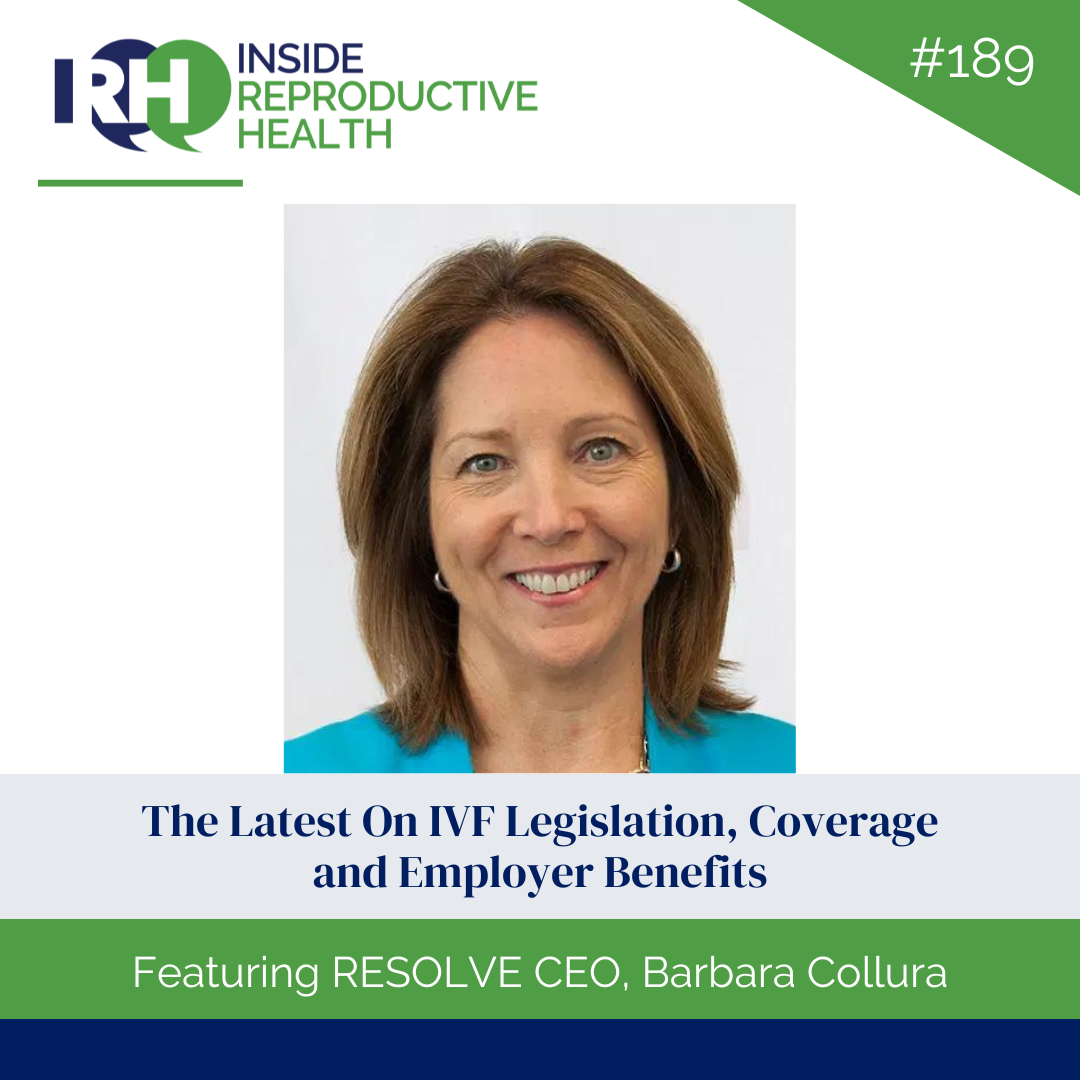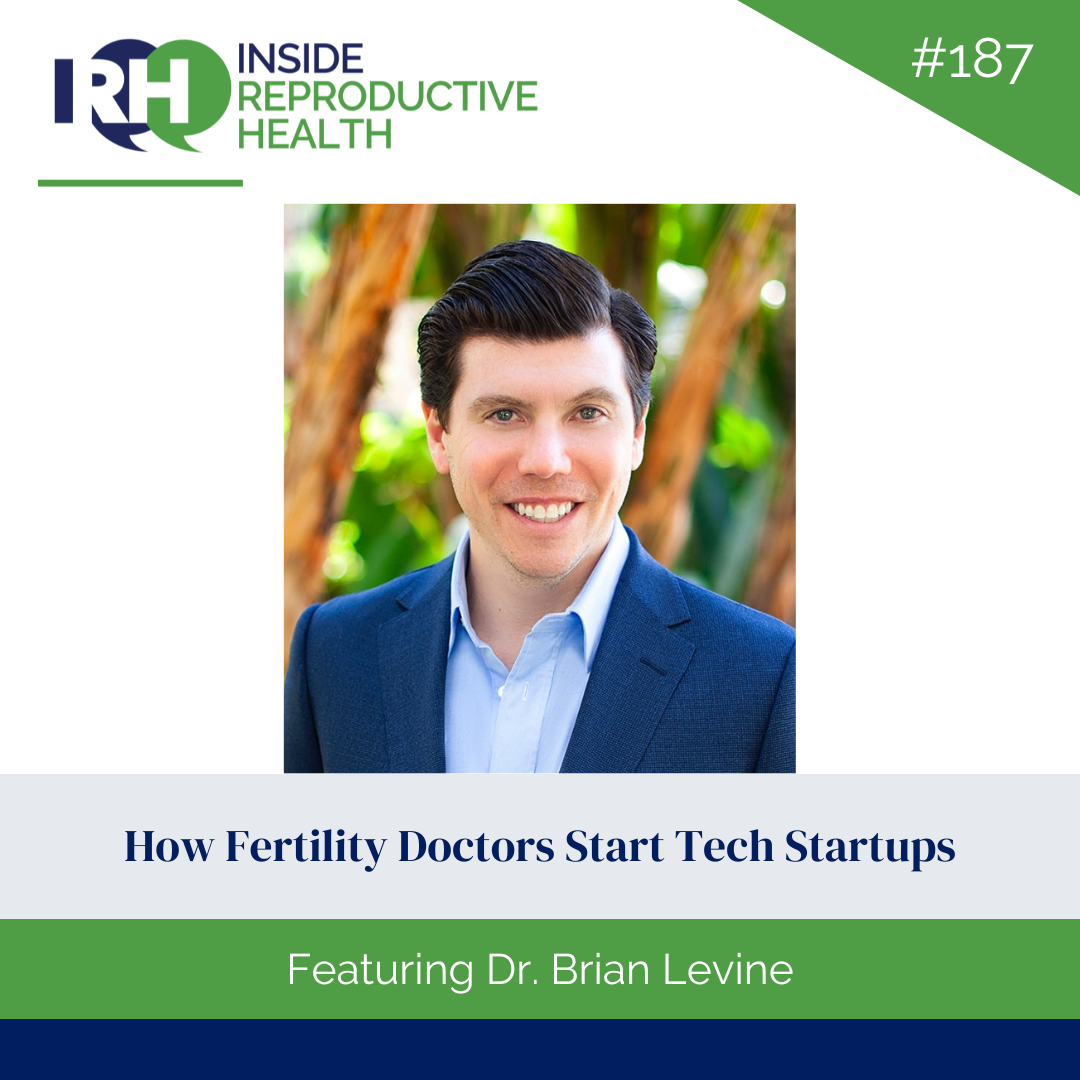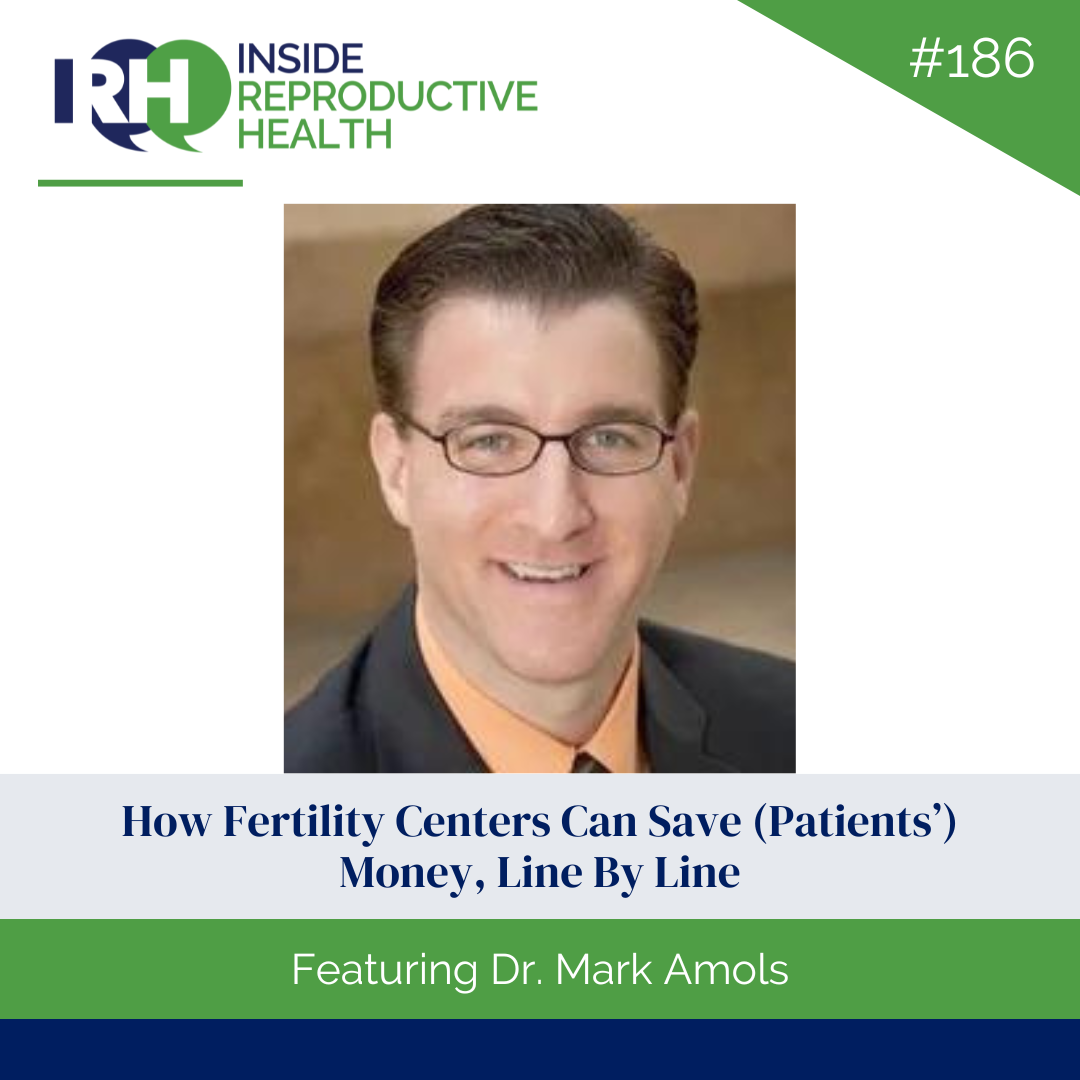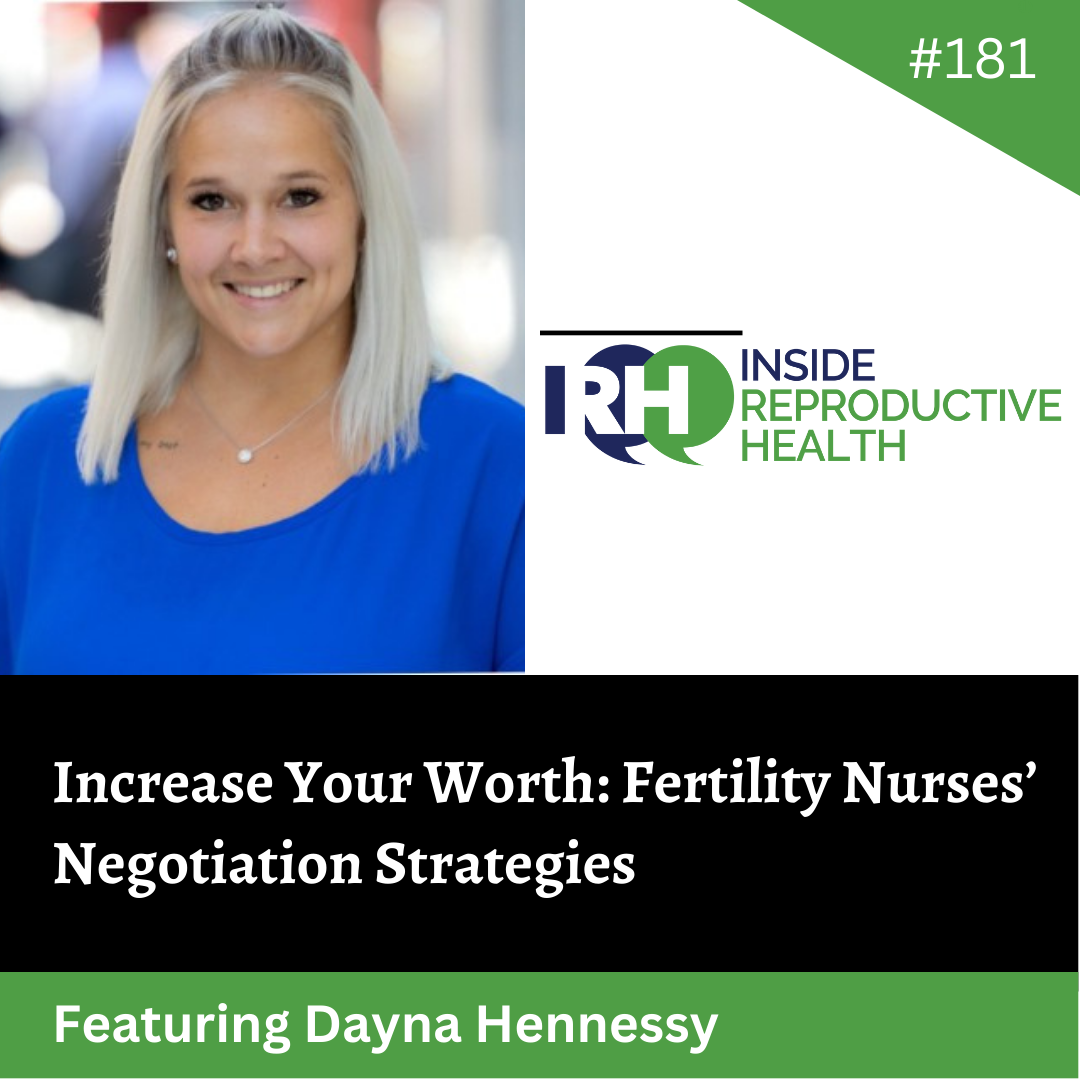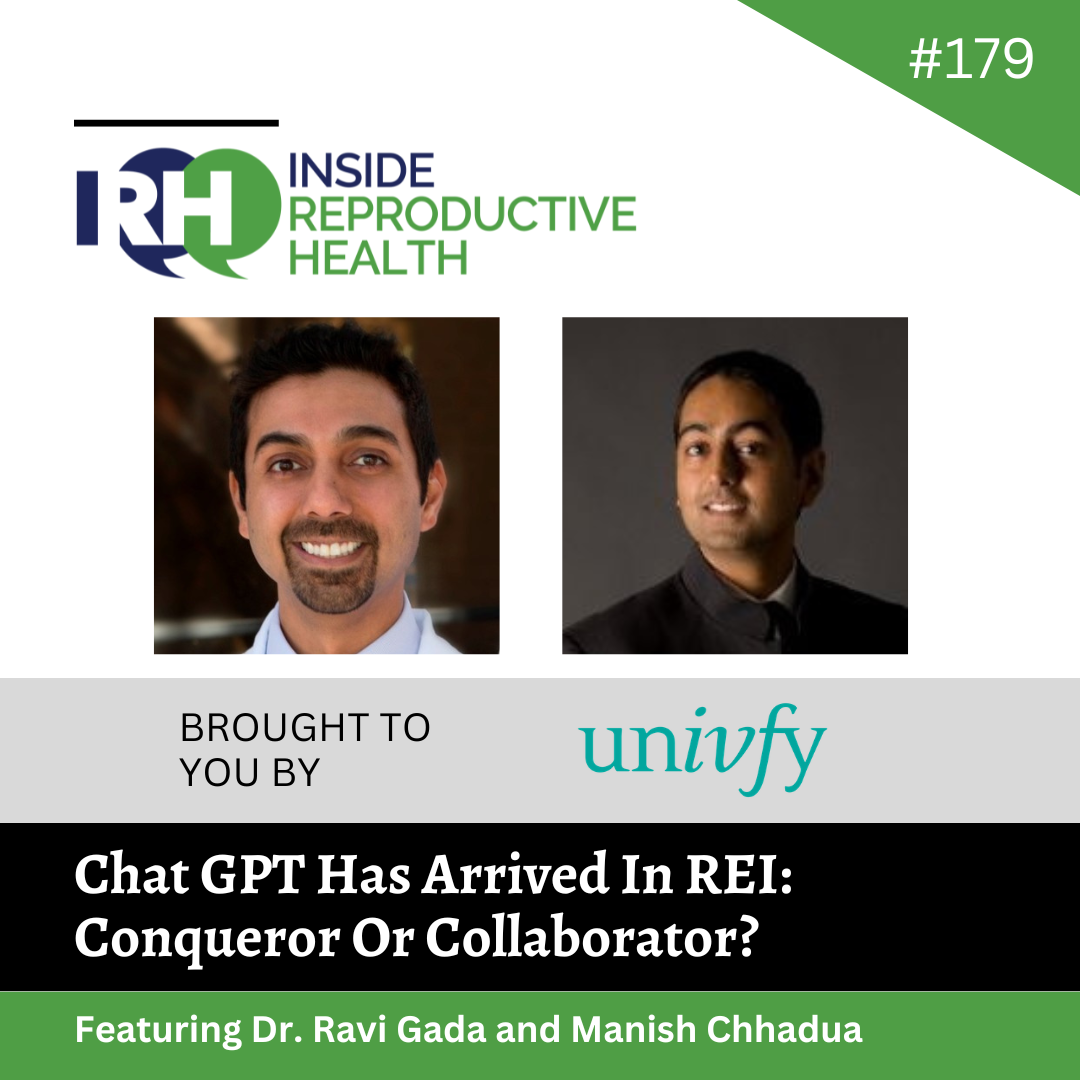DISCLAIMER: Today’s Advertiser helped make the production and delivery of this episode possible, for free, to you! But the themes expressed by the guests do not necessarily reflect the views of Inside Reproductive Health, nor of the Advertiser. The Advertiser does not have editorial control over the content of this episode, and the guest’s appearance is not an endorsement of the Advertiser.
Whether you’re a fertility doctor looking to make an AI company or a tech entrepreneur entering the fertility field, this week’s episode of Inside Reproductive Health is full of interesting insights.
Paxton Maeder-York. CEO and Founder of Alife Health, breaks down how he started his medical AI company, and walks you through the business and regulatory obstacles required to stay in business.
Tune in to hear Paxton discuss:
How an AI company is funded and founded (And If it’s possible to bootstrap without outside investment capital)
The unbiased large heterogeneous datasets required to run AI (Not to mention the other companies needed to acquire this data)
How he chose his early investors and advisory board (Including former guest Dr. Michael Levy)
The monumental difference in data science between 85% good and 99.99%
Navigating the high regulatory burdens within the Healthcare Space
The criteria for when it’s appropriate for a VC funded company to acquire other companies.
Paxton Maeder-York:
LinkedIn
Alife Health
Transcript
Paxton Maeder-York 00:00
Data sciences, you know, it's not that hard to get to an initial assessment or to, you know, the 85% mark, but that last 10 to 15% of performance is all the difference in the world between, you know, you know, making something that is reliable and safe for patients that's unbiased, and making something that's really more of a, you know, a school project. And I think, I think that's a huge delta that we're gonna continue to see. And I don't just mean within IVF or even healthcare broadly, I think that's a problem that we're gonna see across AI as this whole sector continues to grow. We see it in enterprise we see it self driving cars, we see it everywhere. And so, you know, I think when you're talking about getting to that, you know, 99% or .99 following you know, it requires a really talented team and investment and thoughtful you know, methodical development, and that that does require a capital upfront.
Sponsor 00:55
This episode was brought to you by Embie. To see where your time is going visit embieclinic.com/report. That's embieclinic.com/report. Today's advertiser helped make the production and delivery of this episode possible for free to you. But the themes expressed by the guests do not necessarily reflect the views of Inside Reproductive Health, nor of the advertiser, the advertiser does not have editorial control over the content of this episode, and the guests appearance is not an endorsement of the advertiser.
Griffin Jones 01:33
Building an AI company in the fertility space, many of you have business backgrounds, many of you have medical backgrounds. What about bio mechanical engineering? What about surgical robotics? What about data science? Today, my guest is CEO Paxton Meader-York, I don't delve much into his company a life for what they do for the fertility field. Instead, I tried to give you an idea about how an AI company is funded, founded and managed from the start. We start with Paxton leaving Harvard with a degree in Biomechanical Engineering cutting his teeth in the Silicon Valley ecosystem working in surgical robotics going back to Cambridge getting his data science master's and his MBA back to Silicon Valley, how he chose some of the people on his advisory board and early investors including Dr. Michael Levy of Shady Grove and Dr. Allen Copperman of RMA of New York packs and talks about the investors that led their Series A round and their seed round. I asked Paxton if it's even possible to build an AI company bootstrapped no investment. He talks about those barriers, including the unbiased large, heterogeneous datasets that are required, and consequently, the companies that are usually required to partner with to get those datasets. He talks about the high regulatory burden, especially in healthcare, and the monumental difference in data science between 85% good and 99.99%. I tried to get criteria from Paxton why they haven't acquired a company yet, because I'm trying to get criteria for you of when it's too early for new VC funded companies to go off acquiring other companies. Finally, I get Paxton to talk a little bit about their tech stack, their org structure and their team, software product and so on. If you're a fertility doctor looking to build an AI company or a tech entrepreneur entering the fertility field, I hope you enjoy this founder story with Paxton Meader-York. Mr. Meader-York, Paxton, welcome to the Inside Reproductive Health podcast.
Paxton Maeder-York 03:18
Thank you so much for having me, Griffin, it's great to see you.
Griffin Jones 03:21
I look forward to talking with you. I've had a couple founders on recently, Dr. Brian Levine was one of them and that was a very popular episode. Got to go into the mechanics of how he started his company, I want to go into the mechanics of how you started your company. And I want to, there might be some things, likfe funding and structure that in some of the circles you run with might be elementary, but not as elementary to some of the people that want to start companies in the fertility field. And so let's maybe just start with how your company started. We can we can talk about the idea and the genesis, and then I'll really want to get into the mechanics.
Paxton Maeder-York 04:03
Absolutely. And thank you again for having me on. It's really great to be here. So yeah, I'll start with maybe a little bit of background about myself. So I've been passionate and in really engaged with medical technology for a long time now really started for me back in middle school where I was watching surgeries at MGH and doing robotics camps at MIT. I ended up studying biomedical engineering at Harvard undergrad, really focusing in surgical robotics, and then working at a company called Oris health out in the Bay Area that was focused on lung cancer systems. So I had lost several grandparents to lung cancer. It was a really important mission to me, and really got to cut my teeth in the Silicon Valley startup ecosystem. When that company got acquired by Johnson and Johnson, I went back and did a master's in data science as well as my MBA back at Harvard, and really became passionate around the opportunities for artificial intelligence and advanced analytics, more broadly across health care. My little brother's actually an IVF baby. And so infertility care has always been something that's been incredibly important to me both personally, and as we see the growing trends across the population, it's only of increasing importance to many folks. And so started the company about three years ago really with the mission of trying to bring modern data science techniques and personalized medicine to the forefront of the IVF sector.
Griffin Jones 05:29
So you're at Harvard for undergrad, and that's where you got your degree in surgical robotics?
Paxton Maeder-York 05:34
Yeah, so biomedical engineering undergrad, and then grad school was both masters and data science and then an MBA.
Griffin Jones 05:40
Okay, so biomedical engineering, and then that's what brought you out to Silicon Valley. And I'm sorry, you may have said it, and I may have missed it, were you the the founder of that company that you went to work for in Silicon Valley, or you're working for somebody else at that time?
Paxton Maeder-York 05:54
I was working for somebody else, and really was hoping to learn a lot from a very experienced CEO, Fred Moll, who founded that company actually founded Intuitive Surgical, which is the preeminent preeminent system out there in the robotic surgery space really pioneered the sector. And so you know, learned a ton from working with him and the other amazing folks there, actually, a couple of those I worked with at Oris came over and are now running a lot of the A Life team. So certainly was was an incredible experience for me early on in my career.
Griffin Jones 06:26
So you could have stayed and then worked for a different Fred, and a couple of Fred's and stead of going back to the east coast to get your advanced degree at Harvard. Why, why go back? Why go for the advanced degree as opposed to staying in the Silicon Valley ecosystem that you cut your teeth in?
Paxton Maeder-York 06:48
So you know, I think there are a variety of reasons for it. You know, my, my undergraduate focus was really in bio mechanical engineering, so medical device. And, you know, I got to learn a lot about the complexity of bringing robotic systems and complex medical devices to market, both from a development standpoint and a commercialization standpoint. But I've always been fascinated around data science, and really, its propensity to answer big questions, right? Whenever we think about asking a question whether, you know, it's in politics, or healthcare or any other sector, right, I think, you know, everybody turns to Google and looks at, you know, large scale studies, and really everyone's, you know, looking for data to answer that question. And so becoming more proficient at data analytics, understanding how to use modern data science, especially reinforced with the incredible computational power we have at our fingertips today was just an area I was super passionate about. And on top of that, you know, I always known I wanted to be a leader and hopefully found a company someday. And so by working and getting my MBA as well, it gave me a lot of context on the broader economy, how companies scale, and also hopefully, will allow us to continue to grow into the long term vision that we set out for at Alife.
Griffin Jones 08:10
But what was it about either Harvard at that time, or the degree itself where you felt like you would get that leadership background more through an MBA and more of the data science understanding from an advanced degree as opposed to working for a couple other biomed startups or a few other, even maybe even more mature companies, out there in the in the tech sector?
Paxton Maeder-York 08:38
Yeah. So I mean, I think it's a couple of things. I mean, one as an engineer, and I really consider myself as an engineer, first and foremost, you know, I always want to understand as much as I can about the technology before going out and, and building it either with a team or on my own. And so I certainly felt like the the advanced mathematics I was taking in my master's program, and also just really diving in and understanding how this recent kind of trend of artificial intelligence, I know it's a topic that has been talked about since the 80s, if not earlier, but a lot of the really exciting work that's happening in AI is really started in 2017, with a lot of the image based pattern recognition work, AlexNet, and so forth. And and then on top of that, on the MBA side, you know, I worked at Oris, got an incredible kind of mini degree from from that experience, I did spend a summer working with Google X. So got, got to scratch the itch and see what was going on inside of that black box. But with the MBA really gave me was the opportunity to look at hundreds of different businesses and all these different contexts and that type of pattern recognition similar to what we deploy on the actual medical technology side, you know, I think is really valuable as a young person as a leader and as someone who's continuing to try to strive to scale businesses and of course, deliver huge value to both clinicians and patients in the long run.
Griffin Jones 10:02
So I don't think this is degressing too much, I think this might be at the crux of why you went back versus why one might not go back to get that more advanced education. And I think of, there's a common adage that says, You don't have to be the expert in a given field. And they'll they'll cite Henry Ford, and they'll say, you know, Henry Ford was not a mechanical engineer, he didn't build cars himself, he, but yeah, but he knew a ton about cars. And, and I just don't believe that you can't have a certain ground level of understanding in a subject and then build a business out no matter how good you are as a, as a manager of people, as a capitalist in raising money, that you have to have some type of, you have to have some type of background. And for you building a tech company, I think what is, what would you consider the minimum level of background to know that you're not being fleeced? Or that you can, even if you're not being worried about being fleeced by people that work for you, that you can sufficiently instruct to them and delegate to outcome? So what do you think the basement is for that? Or where have you found yourself using your degree or to be able to, to use it to for the vision of the company?
Paxton Maeder-York 11:31
Well, I certainly wouldn't say that these types of degrees are required for anyone trying to start a business. And of course, a lot of the people listening to this podcast, you know, are extremely, you know, proficient, either in their field, a lot of people have PhDs or MDs, I think, you know, it's, it's a tough couple of different components. You know, one, obviously, the nature of the business, I think, is important, right. And, you know, if if there are many companies out there, where the founder may be technical, or may have a purely sales background, and those types of leaders can can bring enormous value to the organization, I think a lot of it does have to do with kind of the mindset of the leadership and how well you're able to accumulate a team of experts in those different domains and fit the pieces to the puzzle together. You know, having said that, I think if you're going out and trying to do something extremely technical, and also something that has, you know, pretty substantial ramifications for your end customer base like we do, in infertility. You know, I think at that point, it's, it's always valuable to have a technical proficiency in that type of technology. And so, you know, it was it was my approach, and it may not have necessarily been the one that is required for everyone. But I certainly wanted to have as much know how in medical technology development and all the regulation and quality management system and you know, kind of the domain level expertise in that having done that in the surgical robotics space, and then combine that with technical know how around data science so that we can look at these problems, and I can contribute, and also, hopefully recruit an incredible team of data scientists and AI experts to this specific application. Which, personally, I think is an incredible application of this type of technology. I think there's so much opportunity for advanced analytics across healthcare, but specifically, within IVF. Just to help support bringing personalized medicine and helping clinicians deliver the best care they possibly can, whether that's digitalising, the embryology workflow, helping to capture image and images and, you know, kind of manage, manage expectations on that side or, you know, helping to select the optimal ovarian stimulation protocol and when to trigger, which is another component of what we build at Alife. So, you know, I think the the short of it is, there is no basement, if that, if that makes sense. But I think, you know, certainly in this arena, I wanted to feel as prepared as humanly possible before I strove out and tried to build the company on my own to go and tackle some of these problems.
Griffin Jones 14:00
And did you strive out right after you got your MBA and your masters in data science? Or did you go back work for somebody else? And then that came later?
Paxton Maeder-York 14:11
No, I strove out right after my graduation. So actually, the application of using AI and computer vision on embryo analysis was kind of a the initial project and something I worked on as my master's capstone thesis. And then that spun out into the company. And then of course, you know, when you start a company, one of the great pieces of advice I got early on in my career from a close advisor was, as soon as you kind of have the pieces in the toolbox that you need, and you have an idea, you go off and do it and you start pulling on the thread. And of course, as you pull on the thread, and you start working on the problem, and you work with customers, and you learn more about the space and you build an advisory board and you ask what types of problems clinicians or patients are seeing, you learn more and more. And so when you look at the genesis of Alife and how much we're doing today relative to the initial idea, a lot of that has expanded over the last three years, and transparently a lot of those amazing technologies or product ideas didn't come from me. The holistic vision came from me of we're going to head in this direction and built incredible products and use AI to help support people who want to start, continue, or finalize their families, but great ideas come from anywhere. And that's really where, you know, bringing an amazing group of people together and working collaboratively, I think personally results in the in the best outcomes.
Griffin Jones 15:35
So you start working on it, at what point did you build the advisory board? Did you build your advisory board before you started raising money?
Paxton Maeder-York 15:41
I did. So you know, when I first started out, I kind of had this idea, I started talking to a few investors and immediately started talking to many different, you know, top doctors in the space, either through you know, connections or cold emails, there's a whole component of this, that is just straight hustle. And you know, over time you build rapport. And you know, some of the incredible folks, Michael Levy, for example, at Shady Grove, now US Fertility, was one of the first folks that I was lucky enough to get to work with. And then as you know, you kind of continue to build reputation in this space, more and more people and top clinicians got excited by both our team, how we were approaching the problem, how we worked on these types of issues together and integrated our clinical advisors feedback. And so our clinical advisory board just has continued to grow. And the whole team, which is now you know, over 28 folks strong, is constantly looking for feedback testing, working with those doc's to run studies to validate our algorithms. It's kind of a constant approach. And so I think that advisory board has been an incredible asset for the company, and we're super grateful to have all of their support.
Sponsor 16:53
Your clinic might be seeing 1000 new patients a year. Do you know how many REI hours per year you're spending on patients that don't convert to treatment? Over 700 according to the averages. That's over 700 hours wasted. There's finally a technology that scales access to care while allowing you to serve patients at the top of your license as an REI. Embie is that technology. Embie enables fertility clinics to treat more patients with their existing staff and infrastructure. By improving workflow and patient communication, Embie enables you to generate over $1 million in additional revenue per year. Embie saves REIs hours per converted patient. Embie saves over two and a half hours of nurse admin time per cycle. Embie enables you to see up to 20% more patients per year. How do we know? Embie has calculated 23 metrics for REI and clinic benchmarks and we are making them available to you. To see where your time is going visit embieclinic.com/report. That's embieclinic.com/report.
Griffin Jones 18:03
How do you manage the interests of different people either on the advisory board or some of those earlier folks that you're working on the problem and consequently the product with, so Michael Levy at Shady Grove is a very big center and group of centers. And as big as Shady Grove and US Fertility are they're not the entirety of the market. And any startup faces a challenge where they can they can fall into scope and create too much. So how did you how did you balance that, especially with that particular this is a really big center, you could build something that's just for them and assume that it's applicable to everyone. But there's a wide variance in workflows of clinics of all kinds. So how did you balance the needs of maybe this one, two, three, four people that we're working with now in this moment versus what's really going to be scalable for a business going forward?
Paxton Maeder-York 19:05
It's difficult. And I think, you know, this is a pitfall that a lot of people, you know, fall into right is how do you avoid just building a tailored solution to a single customer? And you know, while Dr. Levy was, you know, one of the first people I spoke to just through a connection right at the beginning of the company before I even raised. Very quickly, we built out a much larger advisory board, Alan Copperman from RMA New York who has been really involved with our story, a number of others. And then there's there's just a really thorough playbook that you follow of having a lot of discovery conversations, you know, going to clinics, seeing how they operate, finding those different you know, kind of similarities and differences. And you kind of look for the overlap in the venn diagram where this is a consistent problem across practices. This is something that the technology can you know meaningfully make an impact on. And it is different, you know, a lot of companies in the medical technology space, you know, pick one chief medical officer, for example, and bring them on. And a lot of the product development is done in relation to that individual. And one of the things I've learned in surgical robotics is exactly what you're pointing to, which is that different folks, different clinicians have very different perspectives on you know, what's important to look at. And, as you said, different clinics operate differently. And so, you know, we kind of went with this more broad approach of instead of having a single voice, let's get as many as we can have the top folks in the space, and that is, you know, both, you know, horizontally and laterally across clinics and vertically within those clinics. So, talking to frontline, you know, embryologist, junior embryologist, talking to clinic admin staff, talking to nurses, you know, talking to lab directors, it's really the entire encompassing of the field. And of course, we've interviewed hundreds and hundreds of patients at this point, as we've built free patient products, and also worked to figure out how we're going to bring value with the AI solutions that are going into the clinic. So it's, it's not really a crowdsource model, but it's almost kind of like that. And then, you know, in terms of how to how to really solidify what you're building, I credit our incredible product team, and especially Melissa Teron, who's our chief operating officer, for doing a lot in that that area, there are certainly playbooks you can follow and best practices and you know, modern product development and things like IDEO, you know, really paved the way for some of those things. And the Stanford design school has got a lot of incredible resources. But, you know, it's definitely an art that in terms of figuring out where the opportunity is, and how do you shape the technology to best fill that need.
Griffin Jones 21:50
When you are getting your MBA, where there are different schools of thought about how you should approach fundraising, that you should phase it in this order, or you should try to get more in in an earlier phase or a later phase, or where there are different schools of thought, and how did you pick the approach that you ended up going with?
Paxton Maeder-York 22:09
You know, there's not only different schools of thought, within, you know, business schools, there's different schools of thought within the venture community. And then there's different schools of thought founder to founder. And that was something that I learned over the course of, you know, the first year and a half or so. And I'm lucky in that I have a number of friends who have also started companies at various stages. But what you learn pretty quickly is that the approaches that other people take around fundraising may or may not necessarily work for you. Now, there are obviously a variety of different types of capital sources out there, you can bootstrap a startup, you can look to private equity, or traditional LBO, you can do entrepreneurship through acquisition, you know, and then there's more of the traditional venture route, which is the route that Silicon Valley is known for, and the route that Alife has taken. But I think what's what's interesting is that, you know, fundraising and figuring out who the right partners are, for the long term, because as you know, as soon as you bring on an investor, and they've put significant amounts of money behind your vision, you're going to be working with them for a long time, they are invested in your story. I got really lucky that I found Deena Shakir, who lead our seed, and lead our Series A and she's been one of our number one advocates for the business since day one. She's been absolutely incredible, through and through. But I think that it's there's so much that goes into fundraising that is beyond just kind of the hype and the FOMO, and pitching. A lot of it in my perspective is about finding that right fit. And who is someone that is going to work with you in the long run? Very similar, I would, I would argue to creating a leadership team. I think a lot about my board the same as I do, developing my internal leaders and how different skill sets are gonna complement each other. So I think every founder is a little different about how they approach that problem. But for me, you know, it was it was a lot of conversations. And I was very fortunate to find some incredible folks, Rebecca Kaden at Union Square Ventures is another one who came on at Series A who just, you know, clearly understands and is passionate about the long term vision of the company. And, you know, I think it's really important to find those folks as early on as you can when you're going out and building something important.
Griffin Jones 24:23
What was it about Deena and Rebecca that made them a good fit?
Paxton Maeder-York 24:27
You know, there's, there's certainly, you know, kind of the more traditional, you know, filters that you can apply, right? Coming from great firms, you know, very sharp investors, certainly asking great questions, bring resources to the table, not just capital but also in terms of advice and network and, you know, you know, other kind of intangible assets. But I think you know, even more so than that, it really is almost a personal decision too. Who do you think are going to be a great fit for your company, the culture you're trying to build? Who, you know, is going to be the right fit for you as a founder? And who, you know, who you want to work with and you know, are ultimately going to be able to, A, keep you accountable, but B, when you need support from the board level or from your investors, or we're going to represent you either in the media or to, you know, follow on investors in later rounds, it is, they say that VC and raising capital is a lot like dating. And I certainly think that that's true. It's, it's, it's, you know, there's things on paper that make it important. And then there's kind of an intangible personality fit that I think is so crucial to get right when you're out fundraising.
Griffin Jones 25:36
Did you have relationships with either or both of them before you went to raise money? Did you meet them during the process?
Paxton Maeder-York 25:43
So I really met both of them during the process. So Deena works at Lux capital, which is an incredible firm, and probably the best deep tech investor VC that I know of, and they had invested in Oris, the company I worked at after undergrad. I had not met Deena during that experience. But you know, when I started Alife and was starting to tiptoe around the capital side of the business, Peter Hébert, one of the founders of Lux, put me in touch with Deena and Peter's a genius, and could tell that Deena and I were going to be a great fit. And then Deena and I spent months and months getting to know each other before, you know, we kind of solidified the relationship culminating in our seed round. And, you know, I really cherish that time. I think it was so valuable that Deena and I got to spend so much time together up front, it's deepened our partnership. And, you know, I think it's, it's ultimately, you know, I consider her you know, as a co founder of the business in a lot of ways. And then Rebecca Anaergia who is from Mavron, who's also incredible, I really got to know a lot closer during the Series A round. And that was a faster kind of, you know, relationship building period, of course, we're continuing to get to know each other and work closely together, every, you know, you know, board meeting and in between and our monthly calls and working through, you know, challenges and exciting milestones for the company, it's constant. But I think similarly, there's, there's just kind of a great fit personality wise, and also in terms of their passion for this space.
Griffin Jones 27:15
I just had Kim Abernethy, from PCA interview me for my own show over Inside Reproductive Health. I don't know if that episode will come out before or after this interview airs. But as I was searching for the central theme of what that conversation ended up being I ended up titling the episode Should Fertility Companies Stop Taking Outside Funding, and then making a categorical assertion that they should stop taking outside money. It was more a call to attention to, for many companies, to invest more in the product market fit phase. That it takes a long time to do that, I see a lot of people burning out money before that's established. And then and then it's really hard. And I think more people could do some bootstrapping, and we might see it as the economy changes over the coming years. I do not say that that's a categorical prescription for everyone. And I know that there's a lot of limit to doing that in tech, especially with AI. Do you think it's even feasible to bootstrap in AI? Now that you're in now that, you've seen the money that you spent, the people that you've hired, the things that you've built? Is it possible to build it to bootstrap and an AI company in the biomedical space? And if it's not, is it possible up to even a certain phase?
Paxton Maeder-York 28:36
You know, it's a great question. I think, to a certain extent, I would hate to say something is impossible, right. And I would love to see someone go out and do it in a purely bootstrapped fashion, I think there are a few things that come to mind that make it very difficult. First off, artificial intelligence really requires an unbiased and very large and heterogeneous data set, that takes a lot of time to develop. And you typically need some sort of relationship or partnership to be able to, to gather that data, and a lot of folks rightly so right, this is really valuable data, you know, want to partner with a reputable company that has all the right data privacy and experts and PhDs that are, you know, it's an investment in both directions. So I think that's one component of it that would make it challenging. I also think that anytime you're doing things in medicine or medical device, there's a high regulatory burden. There are clinical trials and clinical studies that you have to publish. There's quality management systems and making sure that you're you know, following all the all the metrics so that it is medical grade software, and that requires a lot of investment. So you know, I think to do it right, I think it does require a really expert team and it takes a certain amount of time to get a product to the to MVP where you could go out and actually charge either you know, a clinic or you know, a patient or whoever might be your customer across healthcare. That isn't to say it couldn't be done. I think that there are other approaches that one could take to building artificial intelligence, especially if you already had access to a significant amount of data through different types of partnerships or relationships. But, you know, I think, while software is still a lot less capital intensive than robotics was and hardware, obviously, you have to build manufacturing, and, and all the rest, you know, I think it still does require a lot of capital to get these types of technologies off the ground. And more importantly, to do them, right. You know, and I think that's, that's where a lot gets lost data sciences, you know, it's, it's not that hard to get to an initial assessment or to, you know, the 85% mark, but that last 10 to 15% of performance is all the difference in the world between, you know, you know, making something that is reliable and safe for patients that's unbiased, and making something that's really more of a, you know, a school project. And I think, I think that's a huge delta that we're going to continue to see. And I don't just mean, within IVF, or even healthcare broadly, I think that's a problem that we're gonna see across AI, as this whole sector continues to grow. We see it in enterprise, we see it self driving cars, we see it everywhere. And so, you know, I think when you're talking about getting to that, you know, 99%, or point nine, nine, following, you know, it requires a really talented team and investment and thoughtful, you know, methodical development, and that that does require capital upfront.
Griffin Jones 31:31
So there are certain verticals where the barrier to entry is simply too expensive. There's high regulatory burden, there's a number of things that partners might need if they're going to help get a burgeoning company to the MVP phase, then how do you make sure that you don't burn through all of your dough while you're assessing product market fit? Because I see lots of companies that say, Man, you don't have it, like you just raised X million dollars, and you don't have anything that people are going to buy right here. You had, like, you saw the problem, the problem was there, I don't think any more studies would have more clearly revealed the problem or even talking to more customer necessarily would have revealed the problem, they got that part. They, they had some type of solution to bring to the marketplace. And it just didn't fit together, like a lot of these these companies that that don't make it or or maybe make it a little bit never returned the type of profit that they would be projected to do so for what they were valued at. How do you keep yourself from spending through too much money while you're assessing product market fit?
Paxton Maeder-York 32:56
Well, it's a it's a philosophical debate, honestly, you know. I think there are tons of books out there that have discussed this exact problem, you know, Crossing the Chasm, and, you know, the proverbial valley of death. Of course, I think, you know, it's a few things, I think, one, there is a certain amount of discipline that's required, right. And, you know, we have a very strong, talented, but lean team, that is very intentional, you know, we were always trying to make sure that our burn as a company is on track with the development and making sure that we're validating what we've built, both from a clinical and science perspective, but also from a product market fit perspective. I'd also say that, you know, getting to MVP, this, the proverbial product market fit is is challenging and, you know, you kind of going back to my analogy earlier of pulling on the string, you know, you you may have one hypothesis about what a product might look like, that's going to bring significant amount of value, you may test that out, you may realize that's not where there's an enormous amount of value, and that there's additional capability you need to bake in so that it's a compelling sale on a compelling use case for the end customer. And that is to some level and art, I would say come over time. But I think in general, you know, I think folks that have worked in different types of industries and try to come to healthcare, I think, typically will struggle with this. It is healthcare, in general is a much slower moving market than traditional consumer or enterprise SAS. I think, you know, it requires wherewithal and long term thinking and a methodical march towards product introduction, and, and ultimately, you know, you know, getting the system out there so that it can benefit both clinicians and patients alike. And, you know, I think we saw that and in a variety of different stories. It's something that I certainly experienced firsthand when I was working on robotic surgery and that was an incredible success story at Oris. But it's just kind of the nature of the beast. And so, you know, I think making sure that what you're trying to build and In that you're constantly innovating, expanding the vision, making sure that you're adding functionality that is continuing to add and drive more value creation for your end users is just a constant process that we expect to be doing in perpetuity, along with all the incredible research that we're doing with our advisors and our clinical partners and other folks. And so as long as you, I think, plan ahead and know that that's what the road is going to look like, I think there's a path to being a success story. In medical technology, I think, you know, frankly, there was a tremendous amount of capital being deployed over the last five years or so. And there are a bunch of incredible ideas that got funded, that are really more point solutions, and may not ultimately be able to support the types of valuations or the long term value that, you know, venture community is expecting out of those companies. And so I think you're gonna see a couple fold, you're gonna see a couple companies, hopefully, life is one of them, that continues to do things best in class the right way, thinking strategically long term, and working towards towards those goals with the expertise in house, and then you're gonna see some level of consolidation, because we don't need a million different point solutions for all these different subcomponents, they should really all be, you know, part of the same ecosystem of solutions that can help, you know, improve the whole the whole sector. So those are some of the things that come to mind when thinking about, you know, how do you how do you not burn out? And how do you match your capital raising with your burn with the stage of business that you're at, especially within healthcare.
Griffin Jones 36:35
You talked about needing to be prepared for that long haul, does that mean you need to match with VCs who are also prepared for that long haul? And is that something that's realistic to expect from VC? So you talked about the art of managing the product market fit. And when you bootstrap, it's it's pretty obvious. So you run out of money, then you figure out a way until it starts making money. When you when you're playing with other people's money it's different. And you mentioned that because healthcare has such a high regulatory barrier to entry move so much slower than other sectors might be used to, should we expect to see VC firms and not just like, you know, arms of VC firms, but should we expect to see VC firms that are exclusively dedicated to healthcare? Is that an upward trend? Is that not happening as much? Is, is that necessary? Because if it does take this long, then you need the funding to match how long it's going to take. And some people might not be ready for that?
Paxton Maeder-York 37:37
Yeah, you know, I think, first I'd say that there are a variety of different types of investors. And I think that's really important for anyone going out and trying to fundraise, right? There is, you know, there are folks that only do enterprise deals. There are folks that don't touch healthcare. There are a lot of investors that don't particularly want to invest in women's health, for example, or human health, you know. And I think whenever going out to fundraise, you really have to be thoughtful. And again, going back to this dating theme of figuring out who the right folks are to be talking to and, and who has both interest wherewithal and long term vision that can share, you know, kind of where you want to take the business as a leadership team. To answer your other question. Absolutely. There are plenty of healthcare focused founders, or investors and founders. And I also think that the personally, I've found that the style of investment between East Coast and even West Coast varies, and one of the things I'm really grateful of is that I've got both East Coast and West Coast firms on my cap table, and I kind of have been able to accumulate a hybrid of those two different, you know, approaches to investing. And, you know, I think, again, it's it's really just about finding people that believe in the long term vision, see the high level opportunity that exists here, who have been through the pain point, for example, on their own, so that they know, okay, like this is a problem this, this whole sector is going to continue to need to grow, there's going to need to be better technology and analytics can an AI can play an important role on that. And and we see that opportunity down down the line. And you know, as long as the team is thoughtful about how they're spending that cash in very value creative and additive activities, then hopefully, in the long run, you're gonna go out and achieve that goal. So yeah, I mean, people talk a lot about patient capital. I think there, there are certainly funds that, you know, don't expect to return in the same, you know, eight year timeline as others. There's kind of evergreen funds, there's traditional private equity, which has a more much shorter time period of trying to get a return on their capital. So all those things need to be taken into account. But what one of the things that's been so wonderful that I found along my journey is that those investors do exist. There are definitively folks out there who come from incredible firms that believe in the long term envision and are willing to put capital behind things that matter both for the social good, and behind teams that they think are qualified to go out and make that type of difference.
Griffin Jones 40:09
Are you raising money right now? Are you moving on to a Series B?
Paxton Maeder-York 40:12
We're not raising at the moment, we're still heads down and developing a ton and, you know, working with our close partners to get our products out into the field, but we will continue to raise over the course of the lifecycle of the company. And, you know, I think there are a variety of different applications and use cases for that capital beyond just keeping the lights on and continuing to pay salaries and make sure that we're, you know, ever developing more and more of our core platform. You know, there's, there's lots of applications that you can use capital at the right times to supercharge and enhance what you're building. And given our goal is to supercharge and enhance, you know, the clinical care in in practice, the same thing goes for the right investors who have the right almost investor products that can work with great companies like ours.
Griffin Jones 40:57
So your last round your series, they finished when?
Paxton Maeder-York 41:00
A year ago in March.
Griffin Jones 41:02
How much has the market changed in terms of venture capital in the last year and a half since since March of 22? From what you can tell from your, your investors now, your peers, what's happening in Silicon Valley?
Paxton Maeder-York 41:20
So, you know, you can you can read the investor reports, you know, I think we're all looking at the same numbers, there certainly has been a decline in, you know, in both digital health IPOs traditional tech IPOs share prices are down at times, although they they fluctuate, obviously, and certainly, you know, smaller rounds, and where you're expected to be by the time you raise that round has, has evolved. Having said that, you know, I think there's an old adage that the best companies are built during downtime. And I think that's true, I think there was certainly a period where there was so much capital that was being deployed so quickly, people weren't getting to know their investors, and the investors not necessarily getting some of the portfolio companies that, you know, there was a lot of stuff that maybe shouldn't have been funded during that period. And I think those types of businesses that don't have kind of a strong long term goal, and you know, industry or market tailwinds behind them, I think some of those may struggle in the next year or so as they start to ramp up.
Griffin Jones 42:18
Are they still getting funded? Are you still seeing jokers get funded?
Paxton Maeder-York 42:22
I would hesitate to call anybody a joker. But you know, I think to a lesser degree, although, you know, I think Artificial intelligence has certainly become more of a hype term recently. We've been doing this for three years. I think the underlying data science that is backing this type of technology is super solid and real. Having said that, you know, I think unfortunately, there will be folks that may not have spent the time to really become experts in data science, are going to start companies and I don't just mean this in healthcare, I mean, this across the entire tech ecosystem. And you know, hopefully those companies don't, you know, do things that may harm the overarching ecosystem of technology implementation, which is really what we're talking about here, right, you know, AI is, you know, is a is an ever evolving field of data science. And it's based on having these large datasets and how you apply those datasets to real world problems, is, you know, where rubber meets the road, and you're building real businesses. So, you know, I think, I think there will always be some level of FOMO and venture hype that funds different types of companies. But, you know, I think for the folks that are in healthcare, specifically, infertility and IVF, is not going anywhere. If anything, we know that we're not meeting the level of supply that we need to meet the demand. So you know, I think it's a it's a fairly, you know, robust bet to make. Alright, there's, there's a real need here for the population, it's a growing market, you know, there's opportunity to bring technology and best practices, not only from across the United States, but also internationally and globally. And software and AI has this like, really remarkable, unique capability to make that a reality, and a in a very usable and impactful way. So I think from a high level perspective, you know, the, the trajectory in the vision makes perfect sense. I think, of course, then it comes down to well, are you going to be a best in class company? Are you going to do it with high integrity and really do all the clinical validation and make sure that what you're building is, is robust? And that all comes down to you know, how experienced is your team and whether or not you guys have the right mindset to go out and march towards that long term goal.
Griffin Jones 44:38
You haven't acquired any companies in this three year tenure have you?
Paxton Maeder-York 44:42
Not yet. M&A is certainly something that we are considering and when will probably will be part of our story in the long run. But right now, we really view what we're building today the Alife Assist platform, which, you know, is built for reproductive endocrinology to optimize ovarian stimulation embryology team seem to automate and digitalize their platforms. And then, you know, clinic management, that system, we believe is the core of a lot of opportunity to continue to bring this type of value to the clinic.
Griffin Jones 45:11
Did you consider any M&A and building that system?
Paxton Maeder-York 45:14
You know, we have along the way, we've looked at a number of different opportunities, and nothing is really, you know, positioned itself to us in a way that made us feel like this is something that is going to be accelerating our trajectory into the market. You know, there have been other companies that we've partnered with some companies have already come and gone. There, there are companies that you know, and team members, in fact, that used to work at other companies that we've kind of encouraged them to, hey, join our story, because we think we've got a great, you know, great team, great backers, and the right vision and the right resources to go out and get it. But you know, to date, it hasn't made sense to acquire any smaller companies yet.
Griffin Jones 45:54
I'm seeing if I can glean from you any kind of criteria of when it's too early. It seems to me that some companies are acquiring companies too early, but I'm just, that's just me, being a Monday morning quarterback, I don't know. And so I'm trying to see if if there is like any kind of criteria set where it's like, now this, you have to wait until X until it really makes sense to start paying for other companies.
Paxton Maeder-York 46:21
Yeah, I mean, you know, I think there's a difference between, you know, acquiring another business and merging with another business. And, of course, you know, the stage of business, you know, company that you're at, will dictate, you know, there, there are, you know, two plus two makes five situations where, you know, one company is kind of struggling and other companies doing well but kind of struggling together they have a much better shot. I think for for Alife specifically, and I can only really speak from our position, I think there are a number of different opportunities that we're constantly seeing out in the market, and that we know long term we would like to either partner with, acquire or build ourselves. But the way I think about it is I really want to hang those different types of new opportunities off of a core foundation that we've built. And right now being Series A, and having recently launched our products and are now you know, you know, working very closely with partners to continue to push them out into the market and get real world utilization, they're constantly getting better as we get more feedback. You know, that's, that's kind of stage where we are, as the as this platform, you know, hopefully resonates with our end customers and becomes adopted. And it's something that is really impacting clinical care for doctors and patients alike. You know, that's where we can start having really interesting conversations about like, what would be additive to our platform, what are some other things that we're in a unique position with either our data or the infrastructure we built, that is going to make us even more competitive if we either acquire or build some of these additional business opportunities on our own. So, you know, I think post Series B, Series C, that's typically where you see a lot of tech companies starting to do real M&A, with the exception of kind of early stage seed combinations that, you know, for folks that are just trying to continue to survive as businesses,
Griffin Jones 48:06
Let's wrap with the team and the tech stack, I don't expect you to go into anything proprietary about your tech stack, but to the level of detail that you can share, what does it look like just for someone that it might be a fertility doctor has never worked for an AI company? What does the whole tech side, which is the majority of what you're delivering, look like? Because there's a product teams, the the CTO, the tech stack, to the level that you can share?
Paxton Maeder-York 48:35
Yeah, I think, you know, without getting too too deep into the technical side, because, you know, I think people are probably less interested in, you know, what, what back end resources were using as a company, I think that one of the things that can, that can be very, very useful is thinking about building a company almost the same way as you think about building a product. Applying engineering mindset to your organization. And so, you know, for us, we when we started the business, you know, we really were focused on R&D, and developing the early platform. And so you know, what that looked like from a leadership perspective is we had a had a software, I had a product and I had a data science, and each one ran their own divisions and data science was building new algorithms was publishing papers, was speaking at conferences, the software division was actually building the core infrastructure, taking the code from data science and haven't you know, making sure that it was going to run reliably, you know, making sure that we're doing all the documentation and testing, verification, validation testing is super important and medical technology. And then product was really focused in both the design of the front end user interface as well as you know, talking to all our partners and testing and making sure that what we were building was fitting that Venn diagram we talked about earlier. As the company has evolved, you know, we're constantly changing our organizational structure to meet the needs of the business at that base. So as we started to launch product, we brought on a head of Clinical Affairs to run a lot of our clinical studies and RCTs. We started to build relationships in Europe, so we have a head of head of EMEA based in Zurich. We actually have a wholly owned subsidiary based in Zurich to build partnerships across the EU really focused on trying to bring this vision of best practices from around the world to that patient that walks in the door at a specific clinic. And then we consolidated some of the units as well as brought on now head of commercial that's going to help us continue to drive the products and their adoption. So it's kind of a constant, you know, re-evaluation of where we are with the phase of the business. Are we in R&D? Are we commercial, you know, switching over to early commercial phase? But you know, I think really making sure that your team is structured in a way that allows you to go out and thoughtfully and efficiently go out and build what you want to build is, is I think paramount when you're starting your own company.
Griffin Jones 50:55
Paxton Maeder-York, thank you very much for coming on the Inside Reproductive Health podcast.
Paxton Maeder-York 51:00
Thank you so much for having me. It was a pleasure to be here.
Sponsor 51:03
This episode was brought to you by Embie. To discover where your time is going and how Embie can transform your clinics efficiency, visit us at embieclinic.com/report. That's embieclinic.com/report. You've been listening to the Inside Reproductive Health podcast with Griffin Jones. If you are ready to take action to make sure that your practice thrives beyond the revolutionary changes that are happening in our field and in society, visit fertilitybridge.com to begin the first piece of the fertility marketing system, The Goal and Competitive Diagnostic. Thank you for listening to Inside Reproductive Health.






